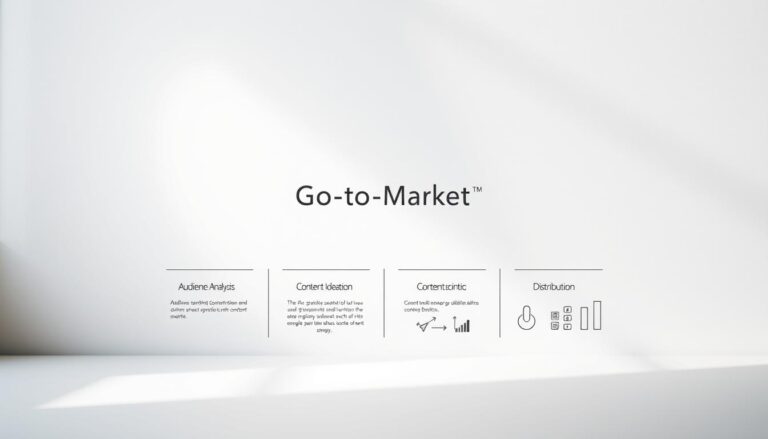Today, GTM automation platforms are a must-have for marketers. They help improve operational efficiency and boost engagement across various channels. With consumer expectations shifting, managing data effectively is crucial. Google Tag Manager automation stands out by letting businesses automate their tag and tracking code management without needing a lot of IT resources. Using these tools saves time and cuts down on manual errors. This leads to more reliable data. This part talks about the importance of GTM automation in refining marketing strategies and making decisions based on data for successful campaigns.
Key Takeaways
- GTM automation platforms enhance efficiency in marketing operations.
- Google Tag Manager automation simplifies tag management processes.
- Automation tools reduce manual errors, improving data accuracy.
- Effective use of GTM can lead to better customer insights.
- Streamlined tag management supports data-driven decision-making.
Understanding GTM Automation Platforms
GTM automation platforms are key for marketers. They help manage digital marketing campaigns more easily. By using these tools, repetitive work is reduced, making things more efficient.
What are GTM Automation Platforms?
GTM automation platforms make marketing tags easier to handle. They let marketers use automation for better operation across different channels. This means businesses can work on big-picture plans without worrying about tag management details.
Key Features of GTM Automation Platforms
These platforms stand out because of certain features. Such features include:
- User-friendly interfaces for simple tag management.
- Robust analytics capabilities to track performance as it happens.
- Customizable dashboards for tailored marketing insights.
- Automated reporting for easier data analysis.
Benefits for Marketing Teams
Marketing teams gain a lot from using GTM automation platforms. By automating, they can:
- Make customer interactions more personal.
- Make better decisions with in-depth data insights.
- Save time by reducing manual work.
- Increase conversion rates with targeted content.

Leading GTM Automation Tools in the Market
Businesses today are on the lookout for tools that make their marketing better. Particularly, they’re interested in gtm automation platforms. The choices are many, each serving different needs. Let’s dive into three top tools in the market.
HubSpot: A Comprehensive Solution
HubSpot is like a Swiss Army knife for marketing. It blends CRM, email marketing, and analytics into one. It’s easy to use yet powerful with its tag manager automation tools. HubSpot helps marketing teams run campaigns smoothly and nurture leads with care. It’s a standout in gtm automation software.
Marketo: Advanced Automation Features
Marketo is known for its advanced features, perfect for large companies. It’s designed to navigate complex customer paths with advanced analytics and thorough reports. This software lifts marketing efforts by offering solutions that hit the mark across various gtm automation platforms.
ActiveCampaign: Customer Experience Focus
ActiveCampaign focuses on improving how customers feel. It combines email marketing, automation, and CRM to personalize messages. This boosts engagement and happiness. ActiveCampaign shows the power of gtm automation software in enhancing marketing and customer interactions.
| Tool | Key Features | Target Audience |
|---|---|---|
| HubSpot | CRM integration, email marketing, analytics | Small to medium-sized businesses |
| Marketo | Advanced automation, detailed reporting | Large enterprises |
| ActiveCampaign | Email marketing, automation, CRM | Businesses focusing on customer experience |
Integrating GTM Automation with Existing Systems
Integrating GTM automation with current systems boosts operational efficiency. It brings together data sources, making customer info more accurate and accessible. This is true across marketing, sales, and analytics tools.
Importance of Seamless Integration
Seamless integration links everything into one system where data moves smoothly. This setup means customers get personal experiences. At the same time, teams get deep insights to make smarter decisions. GTM tag management makes sure all parts work well together, boosting how work flows.
Using scripts to automate tasks means operations stay steady with fewer mistakes.
Popular CRM Integrations
CRM systems like Salesforce and HubSpot lift GTM automation’s impact. Connecting with these CRMs, organizations learn about customer trends and likes. This lets teams target their campaigns better. A smart integration of tools, as this guide suggests, is very profitable.
Overcoming Integration Challenges
Integrating different systems brings hurdles like data gaps and tech mismatches. However, good planning and API help can tackle these issues. Using tools for automatic data syncing keeps marketing updated and relevant.
It’s crucial for organizations to focus on training and resources for these tasks.

Best Practices for Implementing GTM Automation
Adding GTM automation to your marketing can make a big difference. To really benefit, it’s essential to stick to some key steps. Start by setting clear goals and deciding how you’ll measure success. This helps you see how well your automation is working.
Setting Clear Goals and KPIs
Knowing what you want to achieve is the first step. You might aim to get more people to buy things or to keep your website visitors interested. By identifying clear goals, everyone knows what they’re working towards. This keeps your team focused and moving in the right direction.
Choosing the Right Automation Tools
Picking the best gtm automation tool is crucial. It should match what you need for your marketing goals. Look at what each tool offers, its cost, and if it works with your current systems. Advice from experts, like those at best practices for Google Tag Manager, can also guide you.
Training Your Team for Success
Teaching your team how to use these tools is key. Good training means they can make the most of the automation. Getting your team involved early helps everyone work together better. This way, you can take full advantage of what the technology has to offer.
Future Trends in GTM Automation
The world of GTM automation is quickly changing, thanks to new tech and what customers want. A big change we’re seeing is how AI and machine learning are being used more in marketing automation. These tools help marketers analyze data better, making it easier to predict what customers will do next. This leads to marketing that feels more personal and really speaks to what customers want, making them happier.
Now, more than ever, companies are focusing on making their marketing more personal. They’re using data to understand what their customers like and need. This means they can create marketing that feels special to each person. But, as they do this, they also have to make sure they’re keeping customer data safe. Taking care of customer data is super important for keeping their trust.
As more companies use marketing automation, they have to make sure they’re following the rules for handling customer information. Keeping data safe is not just good for keeping customers’ trust but also for following the law. By keeping up with these changes, companies can work more efficiently and make their customers more engaged. This helps build a better future for marketing automation.
FAQ
What is the purpose of GTM automation platforms?
GTM automation platforms boost marketing by automating tag management. They make data tracking smoother. This improves marketing strategies’ effect.
How does Google Tag Manager facilitate tag automation?
Google Tag Manager makes tag automation easy. It offers a simple interface. Marketers can manage tags without needing lots of coding knowledge.
What are some key benefits of using GTM automation tools?
Key benefits include better understanding of customer actions and more accurate data. They also improve decision-making and campaign success, raising conversion rates.
Which GTM automation tools are highly regarded in the market?
Top GTM tools are HubSpot, Marketo, and ActiveCampaign. HubSpot offers a comprehensive package. Marketo excels in automation features. ActiveCampaign enhances customer experience with personalized communication.
Why is seamless integration important for GTM automation platforms?
Seamless integration matters because it combines data sources, enhancing accuracy and access to customer info across tools. This boosts marketing effectiveness.
What challenges might businesses face during the integration of GTM automation platforms?
Businesses might encounter data silos and compatibility problems. Overcoming these issues needs careful planning, API support, and investing in data syncing tools.
What are the best practices for implementing GTM automation?
Start with clear goals and KPIs. Choose automation tools that match your marketing needs well. Train your team for effective tool use and maximum benefits.
How are AI and machine learning influencing GTM automation?
AI and machine learning are transforming GTM automation. They offer advanced data analysis and predictive analytics. This leads to more personalized customer experiences and better marketing.
What role does data privacy play in GTM automation?
Data privacy is crucial as automation grows. Companies need to follow laws and keep data safe. They should use automation scripts carefully to protect customer info.



